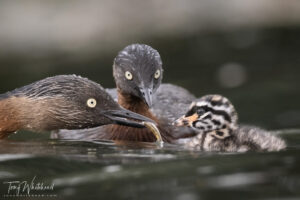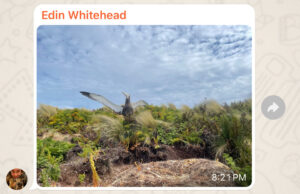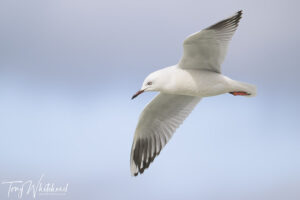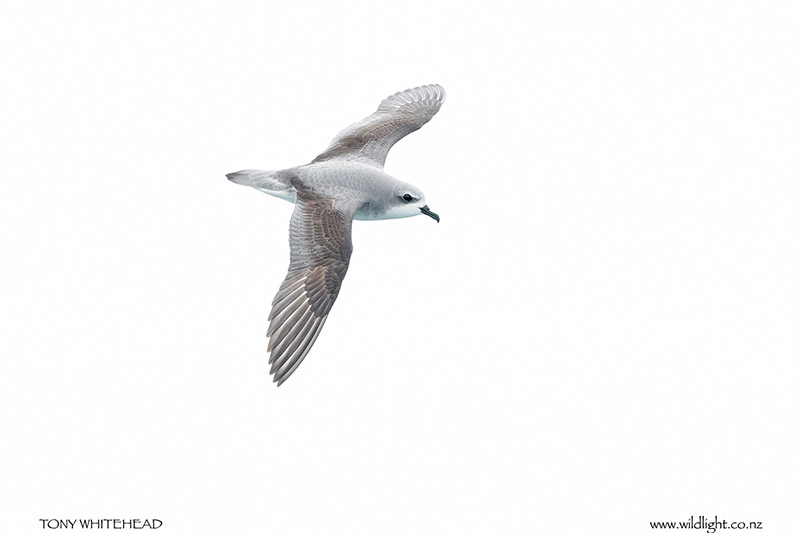
Another new bird sighting for me on our Hauraki Gulf trip with Chris Gaskin and James Ross of the Northern New Zealand Seabird Trust trip was Cook’s Petrel (Pterodroma cookii). They are beautiful little petrels with lovely plumage and make great photographic subjects. We had conditions with cloud and diffused light which was perfect for my Birds on White project.
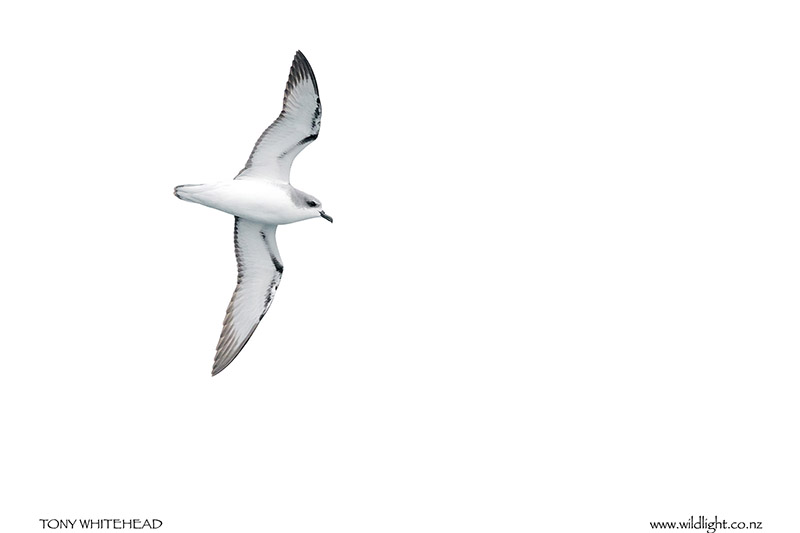
The story of Cook’s Petrel is another example of the ravages of introduced mammalian predators on birds that evolved without needing defences against them. Historically they bred throughout New Zealand’s North and South Islands. Years of predation by introduced rats, cats and pigs have confined them to Hauturu/Little Barrier Island (and a small breeding population on Aotea/Great Barrier Island) in the north and Whenua Hau/Codfish Island in the far south.
Introduced predators have been eliminated from Hauturu/Little Barrier and Whenua Hou/Codfish with a dramatic resurgence of breeding success. Rats previously took over 90% of eggs and chicks on Hauturu/Little Barrier. Eliminating them has seen breeding success rise from 5% to 60% with a good population growth. Whenua Hau/Codfish Island was a slightly different story with introduced weka reducing the population from 20 000 pairs in 1934 down to possibly fewer than 50 pairs in the 1980s. Eliminating weka saw Cook’s Petrel rebounding to around 5000 pairs in 2008.
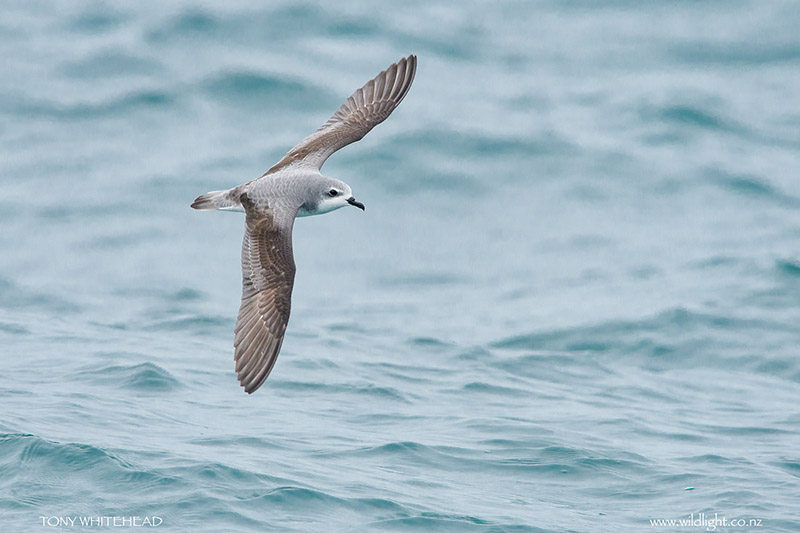
Fisheries seem to have negligible impact on Cook’s Petrel as they forage far off shore on small crustaceans, squid and fish. During breeding they can cover hundreds or thousands of kilometres on a foraging trip lasting about 6 days before returning to the nest at night to feed the chick. Breeding commences in September with a burrow visit followed by a foraging period before laying a single egg in November. Incubation lasts 47 days with the pair sharing 14 day shifts on the nest. Chicks fledge at around 88 days in March when the adults leave to be followed about 10 days later by the chick.
After breeding they disperse with the North Island birds heading to the North Pacific transition and California current system and southern birds heading for the Humboldt current off South America. These behavioural differences along with ecological and genetic differences suggest that the 2 populations should be granted subspecies status. For more on Cook’s Petrel see the NZ BirdsOnline page.
Cook’s Petrel is yet another example of a once prolific species pushed to the brink by introduced predators. Fortunately they managed to hold on in isolated pockets and are now recovering with predator control. It makes you wonder how much richer our environment once was and how much we stand to gain with the ongoing push to correct the errors of the past. Contemplating what can seem impossible and thinking big with initiatives such as Predator Free New Zealand is very exciting. Visiting our island sanctuaries gives us a glimpse of what is possible and it is stunning.
We can all make a difference individually and lots of small efforts compound into something much larger. If we all set up an automatic rat trap in our back yard it would contribute to the goal. Maybe an automatic rat trap would be a great Christmas gift and the start of a new project. Using a web-based service with a mobile app like Trap.nz can help you see the impact of the effort that you are contributing to.
Cook’s Petrel photos with Nikon D500 and Nikon 300mm f4 PF lens.
